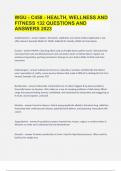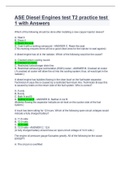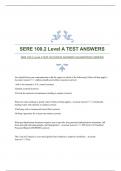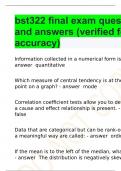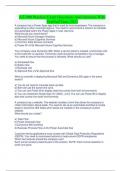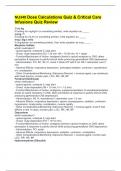Class notes
FULL COMPREHENSIVE NOTEBOOK FOR MATH130: MATHEMATICS IN ACTION
- Course
- MATH130
- Institution
- State University Of New York - Binghamton
FULL NOTEBOOK FOR MATH130: MATHEMATICS IN ACTION. COURSE OFFERED AT BINGHAMTON UNIVERSITY FOR FALL 2023. INSTRUCTOR JAGDEEP SINGH. FRESHMAN/SOPHOMORE LEVEL COURSE. "Emphasizes the real-world significance of mathematics and applications of several areas of mathematics. Topics covered include des...
[Show more]




